Hadoop vs Vertica
May 26, 2023 | Author: Michael Stromann
18
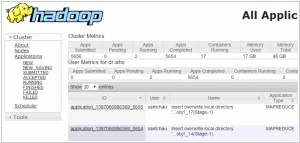
The Apache Hadoop software library is a framework that allows for the distributed processing of large data sets across clusters of computers using simple programming models. It is designed to scale up from single servers to thousands of machines, each offering local computation and storage. Rather than rely on hardware to deliver high-availability, the library itself is designed to detect and handle failures at the application layer, so delivering a highly-available service on top of a cluster of computers, each of which may be prone to failures.
7
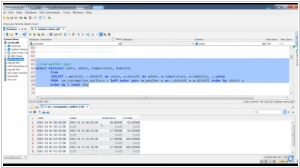
Vertica offers organizations new and faster ways to store, explore and serve more data. Vertica lets organizations store data in a cost-effectively, explore it quickly and leverage well-known SQL-based tools to get customer insights. By offering blazingly-fast speed, accuracy and security, it offers operational advantages to the entire organization.
Hadoop and Vertica are both popular big data processing platforms that offer powerful analytics capabilities, but they differ in their underlying architecture and target use cases.
Hadoop is an open-source framework designed to process and store large volumes of structured and unstructured data across distributed clusters of commodity hardware. It uses the Hadoop Distributed File System (HDFS) to store data and the MapReduce programming model to process it in parallel. Hadoop's strength lies in its ability to handle vast amounts of data and its flexibility to accommodate various data types and formats. It is well-suited for batch processing and complex data transformations, making it popular for data processing and analytics in scenarios where scalability and cost-effectiveness are critical.
Vertica, on the other hand, is a columnar analytical database built for high-performance analytics and real-time querying. It is designed to handle structured and semi-structured data and offers features like compression, encoding, and query optimization to deliver fast query performance even on large datasets. Vertica's columnar storage format and distributed architecture make it ideal for ad-hoc queries, interactive analytics, and data exploration. It is often used in scenarios where fast query response times and near real-time analytics are essential.
See also: Top 10 Big Data platforms
Hadoop is an open-source framework designed to process and store large volumes of structured and unstructured data across distributed clusters of commodity hardware. It uses the Hadoop Distributed File System (HDFS) to store data and the MapReduce programming model to process it in parallel. Hadoop's strength lies in its ability to handle vast amounts of data and its flexibility to accommodate various data types and formats. It is well-suited for batch processing and complex data transformations, making it popular for data processing and analytics in scenarios where scalability and cost-effectiveness are critical.
Vertica, on the other hand, is a columnar analytical database built for high-performance analytics and real-time querying. It is designed to handle structured and semi-structured data and offers features like compression, encoding, and query optimization to deliver fast query performance even on large datasets. Vertica's columnar storage format and distributed architecture make it ideal for ad-hoc queries, interactive analytics, and data exploration. It is often used in scenarios where fast query response times and near real-time analytics are essential.
See also: Top 10 Big Data platforms
Hadoop vs Vertica in our news:
2016. HP to sell its software business to Micro Focus
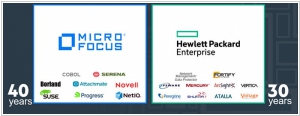
Hewlett-Packard Enterprise (HPE) has reached an agreement to sell its software business to Micro Focus in a substantial $8.8 billion deal. One significant component of HP Enterprise software, Autonomy, constitutes a quarter of the total value and was initially acquired by HP for $11 billion in 2011. The software business being sold also encompasses Mercury Interactive, which HP acquired for $4.5 billion in 2006, Vertica for $320 million, and ArcSight for $1.5 billion in 2010. HPE's Chief Executive, Meg Whitman, intends to shift the company's focus towards other sectors such as networking, storage, and technology services following its separation from computer and printer manufacturer HP Inc. in the previous year.
2014. MapR partners with Teradata to reach enterprise customers
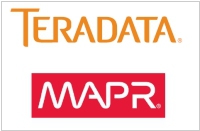
The last remaining independent Hadoop provider, MapR, and the prominent big data analytics provider, Teradata, have joined forces to collaborate on integrating their respective products and developing a unified go-to-market strategy. As part of this partnership, Teradata gains the ability to resell MapR software, professional services, and provide customer support. Essentially, Teradata will act as the primary interface for enterprises that utilize or aspire to use both technologies, serving as the representative for MapR. Previously, Teradata had established a close partnership with Hortonworks, but it now extends its collaboration and analytic market leadership to all three major Hadoop providers. Similarly, earlier this week, HP unveiled Vertica for SQL on Hadoop, enabling users to access and analyze data stored in any of the three primary Hadoop distributions—Hortonworks, MapR, and Cloudera.
2014. HP plugs the Vertica analytics platform into Hadoop
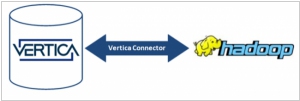
HP has unveiled the introduction of Vertica for SQL on Hadoop, a significant announcement in the world of analytics. With Vertica, customers gain the ability to access and analyze data stored in any of the three primary Hadoop distributions: Hortonworks, MapR, and Cloudera, as well as any combination thereof. Given the uncertainty surrounding the dominance of a particular Hadoop flavor, many large companies opt to utilize all three. HP stands out as one of the pioneering vendors by asserting that "any flavor of Hadoop will do," a sentiment further reinforced by its $50 million investment in Hortonworks, which currently represents the favored Hadoop flavor within HAVEn, HP's analytics stack. HP's announcement not only emphasizes the platform's interoperability but also highlights its capabilities in dealing with data stored in diverse environments such as data lakes or enterprise data hubs. With HP Vertica, organizations gain a seamless solution for exploring and harnessing the value of data stored in the Hadoop Distributed File System (HDFS). The combination of Vertica's power, speed, and scalability with Hadoop's prowess in handling extensive data sets serves as an enticing proposition, potentially motivating hesitant managers to embrace big data initiatives confidently. HP's comprehensive offering provides a compelling avenue for organizations to unlock the potential of their data, urging them to venture beyond their reservations and embrace the world of big data.
2014. Cloudera helps to manage Hadoop on Amazon cloud
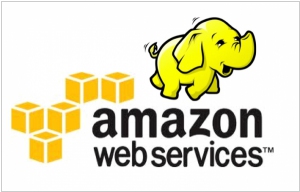
Hadoop vendor Cloudera has unveiled a new offering named Director, aimed at simplifying the management of Hadoop clusters on the Amazon Web Services (AWS) cloud. Clarke Patterson, Senior Director of Product Marketing, acknowledged the challenges faced by customers in managing Hadoop clusters while maintaining extensive capabilities. He emphasized that there is no difference between the cloud version and the on-premises version of the software. However, the Director interface has been specifically designed to be self-service, incorporating cloud-specific features like instance-tracking. This enables administrators to monitor the cost associated with each cloud instance, ensuring better cost management.
2014. HP Vertica introduces SQL-on-Hadoop
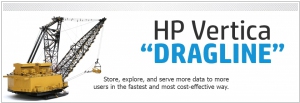
HP's Big Data platform, Vertica, has recently undergone an update to its new version, 7.1, codenamed "Dragline." This release brings forth several enhancements including SQL-on-Hadoop capability, improved access control, optimized backups, expanded support for Flex Zone data formats, dynamic resource management, and more. The standout feature in this version is the ability to execute SQL queries directly on Hadoop Distributed File System (HDFS) without the need for connectors. However, for faster and in-depth analytics, the data would still need to be moved into Vertica. It is worth noting that, as mentioned in a previous post about SQL-on-Hadoop, MapR and Vertica can be operated on the same hardware, leading to cost savings and improved integration between the two platforms.


